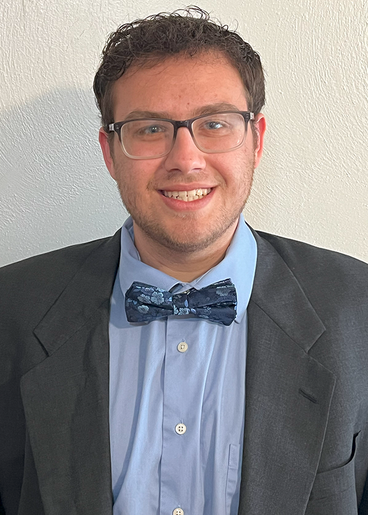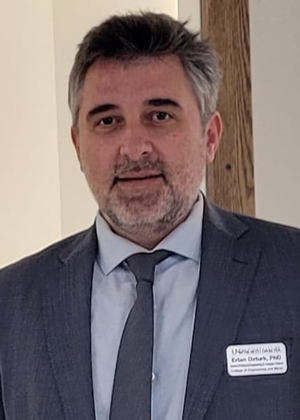Session Moderator: Sara R. Koehler-McNicholas, Minneapolis VA Health Care System
Presentations in this session were chosen from the peer-reviewed contributed papers. The papers will be published in the 2024 Proceedings of the Design of Medical Devices Conference in the ASME Digital Collection.
Presentations are added as they are confirmed.
Material Comparison for Surgical Simulation Models
In orthopedic surgical training of the hand, it is common to practice on lower fidelity models to refine sills. However, no comprehensive psychomotor simulator exists for fundamental skill sets considered critical to competency in hand surgery. It is becoming more common to use a three-dimensional (3D) printer to create models that have similar appearances to that of the bones and other anatomical structures. With the increase of the use of additive manufacturing (AM) technology, a more affordable and accessible way to produce in-house training models has been developed. There are many aspects that go into creation of these models with the first one being the selection of the material itself. Without examining the force of multiple different common AM polymers, it can be difficult to select one without countless trial and error. This study used a Stryker drill with wire collet and an Instron universal testing system to collect comparative force data using five different modeling materials compared to chicken bone. The data showed that the material with least average force difference from the bone models was polylactic acid (PLA).

Walter Dickey
Walter Dickey is a 4th year Senior, pre-med student, studying clinical neuroscience at Virginia Tech. He also works alongside the faculty of the Virginia Tech Biomedical Engineering and Mechanics department as president of the e-Nable at Virginia Tech where he helps lead multiple design teams and collaborations focused on assistive technologies and community outreach for local and global populations.
Multi-Platform Patient Monitor System
This presentation will describe the state of art architecture of commercially available ERETNA multi-platform patient monitor system, which can run on various hardware and software platforms. Its flexibility to include new algorithms for diagnosis of illnesses shall be presented with the example of the detection of Sepsis disease. Therefore, our patient monitor system is also a research tool to implement new algorithms and observe the results in a full-scale system.

Ertan Ozturk
University of North Dakota
Dr. Ozturk is a faculty member in the School of Electrical Engineering and Computer Science at University of North Dakota. He got his MSc and PhD degrees in Electrical and Computer Engineering at Illinois Institute of Technology (IIT), Chicago. Previously, he worked as a professor of Electrical Engineering at Bulent Ecevit University, Turkey. Then, he was the technical leader of an embedded software and hardware team at ERETNA Medical in Istanbul, Turkey. He is the author 40 peer reviewed Journal and Conference papers, and he has supervised 2 PhD and 12 Master theses. His recent research interest is on remote patient monitoring and physical layer security techniques for wireless networks.
Research and Development of a “Blind” Esophageal Food Bolus Disimpaction Device
Esophageal food bolus impaction (EFBI) is when peristalsis fails and food becomes stuck within the esophagus. Without resolution, the patient is at risk of aspiration, dehydration, perforation and death, as well as potential esophageal perforation or bolus aspiration. This is a common emergency requiring emergency department diagnosis and management, with approximately 10-20% of cases requiring endoscopic intervention. The endoscope toolkit consists of the scope camera, scope pinchers that can slowly tease off bits of the bolus, roth nets for bolus capture, and CRE balloons that can dilate the lumen but do not allow the scope or other tools to pass. A better equipped device would be capable of a retrograde path for bolus removal and able to capture larger pieces of the bolus more quickly. With EFBI being one of the most common non-biliary GI emergencies, there is a strong interest from clinicians to have better tools developed. Presented here are initial design concepts and testing.
Theresa Thurston
Texas A&M University School of Engineering Medicine
Theresa Thurston is a third year medical student at Texas A&M's Engineering Medicine program, a four-year MD program that also grants a masters in engineering which focuses on generating healthcare innovations. She received her undergraduate degree in bioengineering at Oregon State University in 2019. She is active in Dr. Bincy Abraham's Inflammatory Bowel Disease clinical research group at Houston Methodist Hospital's Underwood Center for Digestive Disorders.
Influence of Tissue Prestress and Calcification Levels on Iliac Balloon Angioplasty Biomechanics
Balloon angioplasty, which is a well-established procedure to treat iliac-artery lesions, could possibly rupture the artery wall. In this study, a 3-D anatomically accurate finite- element model of the iliac artery was developed to determine the probability of vessel- wall rupture resulting from cardiac-pressure and balloon-expansion forces for lesions with varying calcification levels. The analyses showed that lesions with moderate calcification levels exhibit higher arterial stresses and subsequently higher probability of vessel-wall rupture when compared to lesions with low and high calcification levels. Furthermore, these results were independent of device and vessel geometry. Such analyses could potentially assist in enhancing the design characteristics of angioplasty balloons to minimize the risk of iliac-artery rupture.
Dhananjay Radhakrishnan Subramaniam
Dhananjay is a Senior Design/Product Development Engineer at Abbott Laboratories. He received his Ph.D. degree in Aerospace Engineering and Engineering Mechanics from the University of Cincinnati. He has over 10 years of industry and academic research experience in computational fluid-solid modeling for different diagnostic and device development applications involving the cardiovascular, neurological, and respiratory systems.